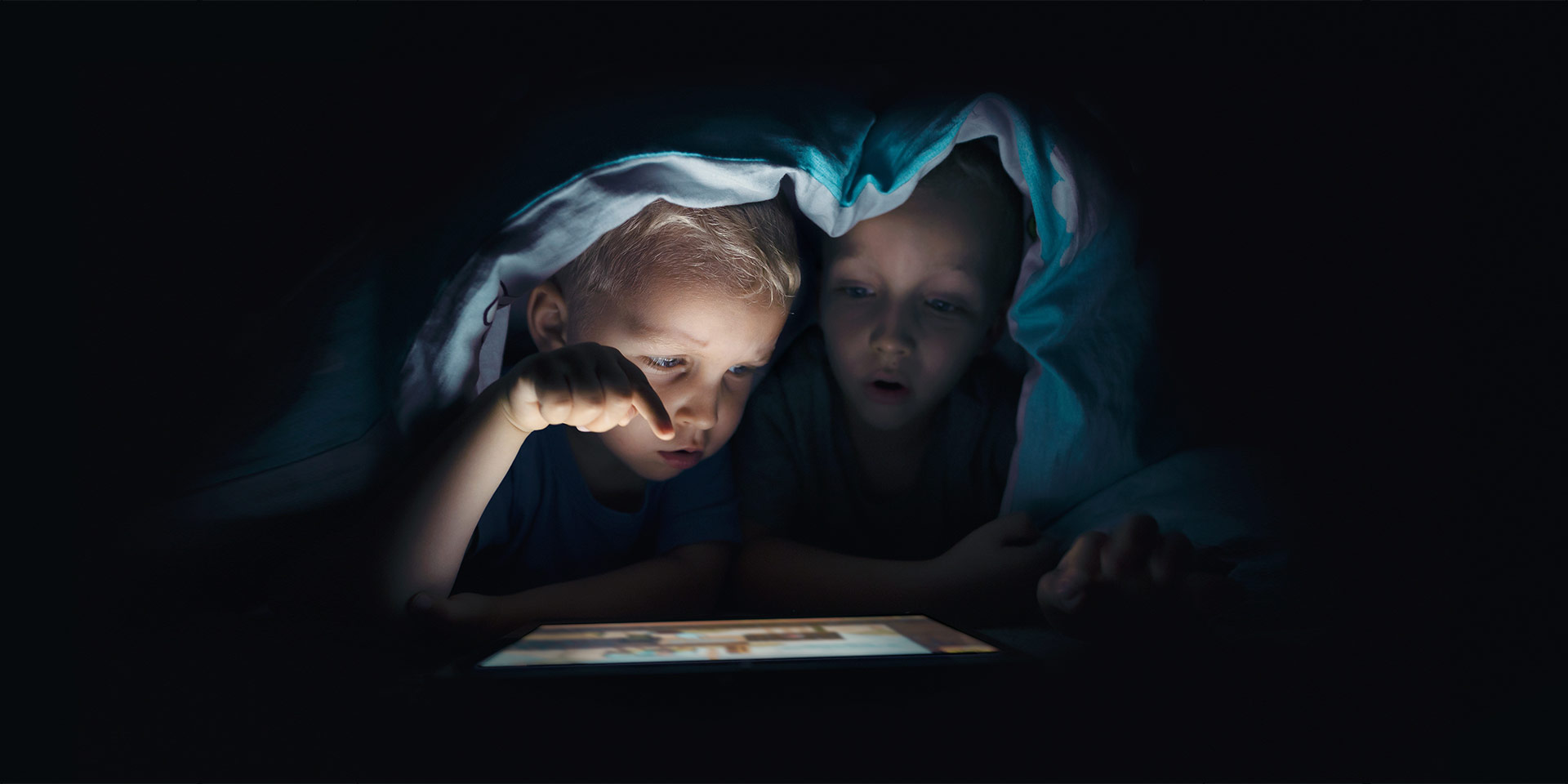Early exposure to technology helps children accumulate information quickly, opening up new ways for them to understand the world. At the same time, however, the online environment can put many of its most vulnerable users at risk.
Surfing the internet, with its many possibilities, can stimulate a child’s cognitive and psychosocial development, encourage critical thinking and problem solving, and improve visual-spatial orientation, as well reaction time and attention.
But far from only being a positive element that young, developing children can use to access education, information, entertainment and social opportunities, the virtual world is full of dangers for the privacy, dignity and integrity of children, and even a risk to their health, both physically and emotionally.
According to a 2019 study led by Save the Children, 27% of underage users spend more than 6 hours online on a regular school day, or constantly check the device they are using for browsing, 99.3% use at least one social network, and 96.1% access the Internet from their mobile phone.
With the closure of schools and the digitisation of education, students have come to spend more time in the virtual space than ever before. Increasing time spent with online activities without a well-structured program can expose children to harmful content and a greater chance that they will be harassed by cyberbullies.
What do the numbers say?
The emergence of touchscreen devices, which allow even young children to access various content based on iconographic indexes, makes exposure to online risks take place at an increasingly young age.
According to the report “Internet access, uses, risks and opportunities for children in Romania”—Romania has extremely cheap and fast internet, so these findings are highly pertinent—there has been a steady increase in children’s negative internet experiences, from 21% in 2010 to 27% in 2013 and 33%, in 2018.[1]
The same report shows the pitfalls encountered in the online space by children and adolescents:
- Online harassment (cyberbullying)
The most common form of cyberbullying is the sending of malicious, offensive or obscene messages, through which the sender seeks to humiliate, ridicule or threaten the recipient. No less than 23% of the children interviewed in this research identified themselves as victims of this type of psychological abuse.
2. Hate speech (cyberhate)
One third of children came into contact with some form of hate speech promoted in the digital environment. Exposure increases with age, from almost 1 in 4 children aged 9-10 years, to 1 in 2 children aged 15-17 years, research has shown.
- Sexting and grooming
Transmitting sexual images or messages over the phone is a common practice and trap into which many children fall, manipulated by adults trying to exploit them sexually. The study conducted in 2018 showed that 24% of surveyed children received messages with sexual connotations, boys more than girls, and those aged 15-17 more than younger children.
- Explicit sexual content
Sexually explicit content is extremely widespread on the Internet. No less than 36% of the interviewed minors viewed such content. Compared to other years, there has been an increase in children’s exposure to indecent images.
- Meetings with people previously contacted online
According to statistics, 42% of children came into contact with people they did not know before in real life, this being more common for boys and older children; and 60% of those who socialised virtually with an unknown person also met that person face to face.
- Extreme violence
Half of the children included in the research saw images of extreme violence in movies, videos, games and other materials not recommended for minors. About 30% overheard discussions about other users’ experiences on topics with strong emotional themes, such as drug use, suicide, or anorexia.
- Internet security and identity theft
Contamination of the device with a computer virus was reported by 1 in 4 children, while 14% reported abuse of personal data (as a result of password or identity theft). Risks related to geolocation and online scams occurred in 8% of cases.
- Internet addiction
Excessive internet use is the most common danger among minor users. In 2018, 2 out of 3 children acknowledged their inability to stay away from the allure of the virtual universe.
- “Sharenting”
Almost 3 out of 10 children stated that both friends and parents posted information about them without first asking for their consent—23% of them said they were upset by the situation, and 21% complained of unpleasant consequences of the posts made without their consent.
- Unconsented distribution of the child’s personal data by teachers
No less than 17% of the subjects stated that the teachers published information about them without first consulting them.
Child safety in the virtual environment: an achievable reality or a utopian idea?
The alarming situation regarding the negative impact of the virtual environment on young minds is also revealed in the “Study on the use of the internet by children, 2019” (Romanian), which states that:
- 40% of children surf the internet very often or quite often without a specific purpose;
- 31% give up their school and family-dedicated time to stay online;
- 28% unsuccessfully try to reduce their hours spent online;
- 13% prefer frequent internet use at the expense of sleep or one of their daily meals;
- 23% do not feel comfortable when they have to disconnect.
The same study shows that internet-addicted students tend to minimise the importance of daily activities, are pessimistic about the future, dissatisfied with their present life, and unfulfilled in the relationships they have with parents, teachers and friends.
This harmful addiction causes physical and emotional health disorders, leading to behavioural changes (mood swings, lack of attention, decreased school performance, and social withdrawal).[2]
The vulnerability of children is enhanced by the transparency practiced online (43% of them post personal information, such as photos, the address where they live, the places they go to) and by the credibility given to the information emerging from the virtual space.
The internet is the most frequently cited source of information for children and only 50% of them usually check the truth value of what they discover online.
As far as sexual messages go, the data from 2019 confirms the exacerbation of the reality of previous years: 43% of minors say they have seen or received such messages; 22% say that the frequency of exposure was daily or at least weekly; 50% say they were personally sent a message with this type of content and almost 20% say that they were asked for a photo or video in which they would reveal the intimate parts of their body.
Children often remain silent after a negative experience and, even if they are disturbed by the information or behaviours in the online environment, only 2 out of 10 minors have a concrete reaction (talking to someone about what happened or trying to find a solution).
Better safe than sorry: recommendations for parents
Protecting children on the Internet is a complex issue that cannot be addressed with antivirus programs or parental control applications only. Adults are responsible for guiding, monitoring and continuously improving the experiences of their little ones as they browse the online environment. Parents are supported by various educational platforms, such as Net Class (a project run by Save the Children).
Educating children with the purpose of a balanced use of the internet must start with correct information about the opportunities and risks of the digital environment.
Specialists advise parents to transform online browsing into a family activity, to encourage their children to tell them what they are doing when they are connected, and to draw clear boundaries about their virtual presence.
0-8 year-olds
For children under 18 months, the American Academy of Pediatrics strongly discourages exposure to the screens of smart devices, which affects language development, as well as the ability to control and self-regulate.
For children between 18-24 months, experts recommend limiting screen exposure to one hour of content per day, but only under certain conditions (not in the absence of parents, or not during mealtimes, for example).
After the age of 5, restrictions can be loosened, as long as the use of the technology is supervised by an adult, regardless of the type of activity carried out online, and access is limited to a shortlist of age-appropriate sites and platforms.
Parents should pay attention to all types of electronic devices used by children and provide a good example of the responsible use of the internet.
9-13 year-olds
Curiosity specific to this age range pushes children to test their own limits, but also those of others. The tendency to avoid parental control and the naïve approach that preteens have about everything on the internet makes them vulnerable to both malicious people and aggressively promoted businesses.
In this developmental stage, the goal is for children to learn how to safely navigate the virtual environment and how to benefit from its resources without suffering, which requires having dependable information about:
- downloading apps onto their phone safely;
- selecting the right privacy options on social networks;
- the role of minimum age warnings required to access certain types of materials;
- reporting potentially illegal or harmful content;
- recommendations for the use of personal data;
- disclosure of privacy issues;
- socialising with strangers.[3]
At the same time, parents should offer children alternatives to spending their free time online, and ways to not always be interacting with their phone, tablet or computer. They should negotiate a set of rules that is good for both parties.
14-18 year-olds
Adolescents are the ones to most acutely feel the need to separate themselves from the authority of adults, and to make their own decisions about their online behaviour. The internet opens up for them a universe far too vast to be narrowed with restrictions set by the adults. Moreover, the ability to use technology with a high level of competence makes them confident in what they can discover, achieve and become in the virtual space. At the same time, the desire for self-assertion and independence can lead them to less secure areas of the Internet.
For this age group, social networks, games and instant messaging apps are part of everyday life, so teenagers need to be very selective about any type of information posted and retrieved from these sources, pay attention to publicly expressed opinions and feelings, as well as to the people they come into contact with.
Conclusion
The aim of the measures taken in order to protect children in the online environment is the respect, and not the restriction, of their rights.
The right to be protected from exploitation, the right to health, to education and information, to identity and privacy, to freedom of speech, and all other internationally recognised rights may be affected by the restrictions meant to regulate the minor’s relationship with the digital environment—but the lack of these guiding directions is far more damaging.
Unrestricted freedom opens up the door to many virtual dangers, with devastating effects in real life, dangers that sometimes translate into criminal behaviours.
In this context, it is not only the parents who are obliged to protect their little ones. The extended family, educators, teachers, specialists, and responsible dedicated authorities must work together effectively to keep children safe while they use the internet.
Genia Ruscu holds a Master’s degree in counselling within social services.















